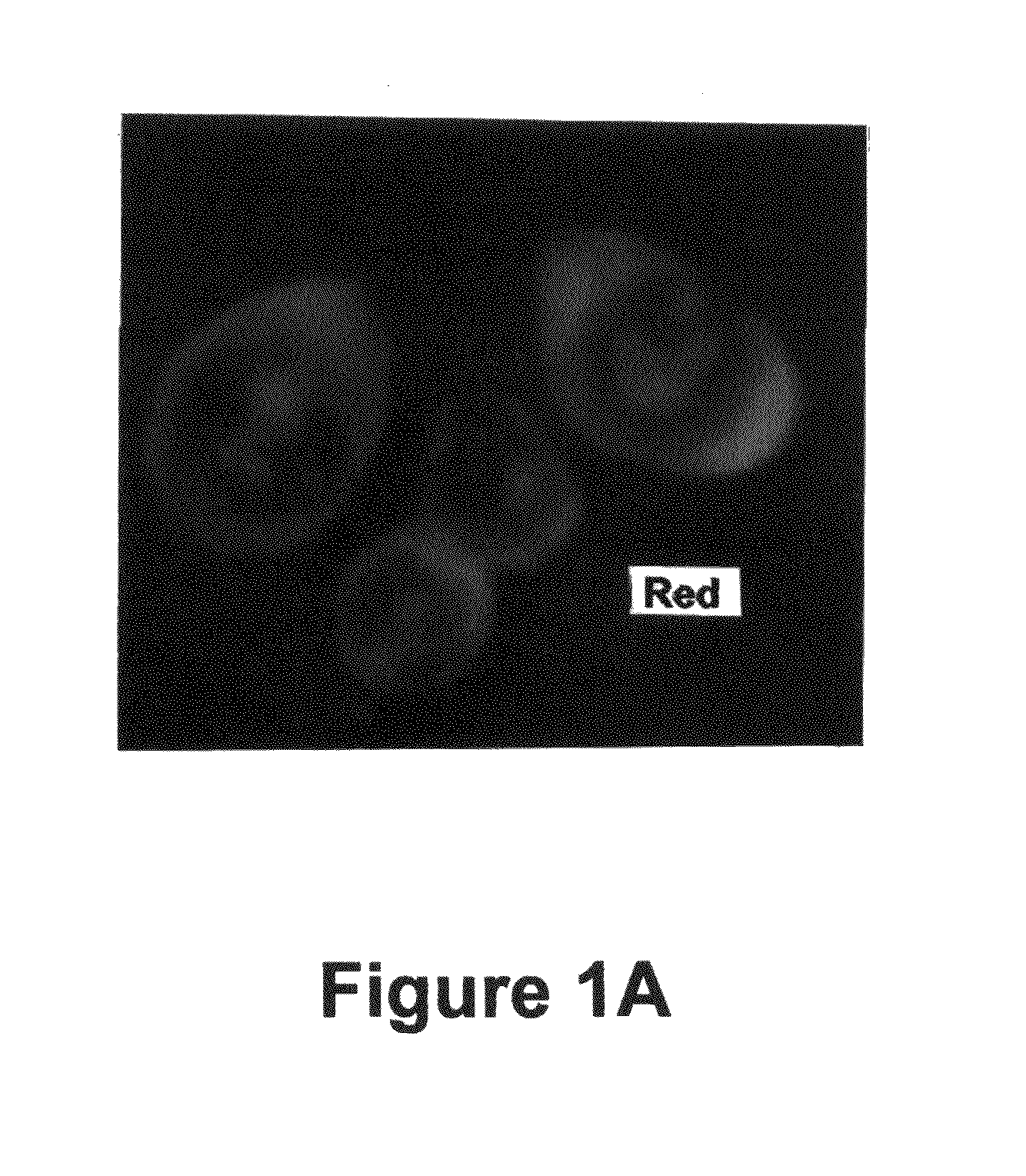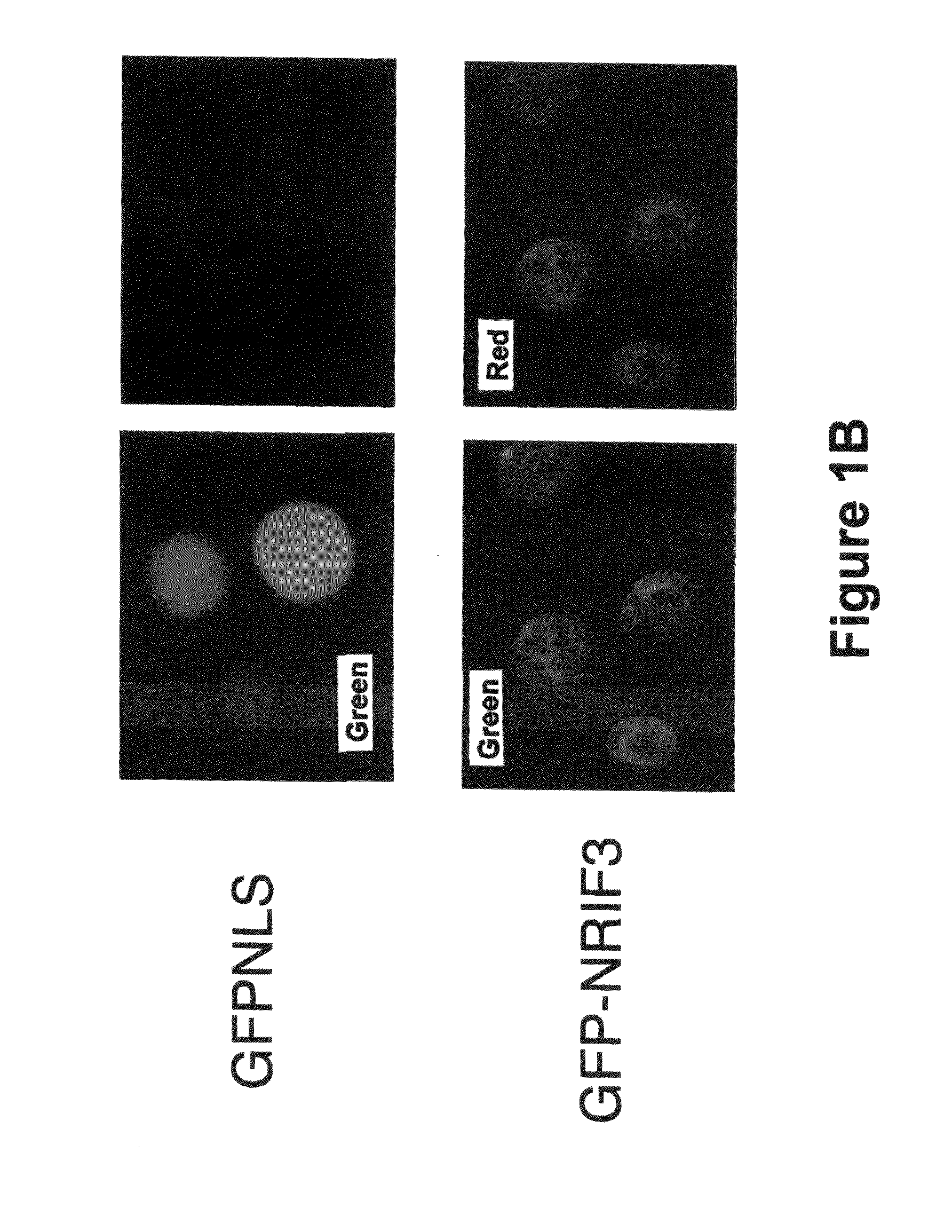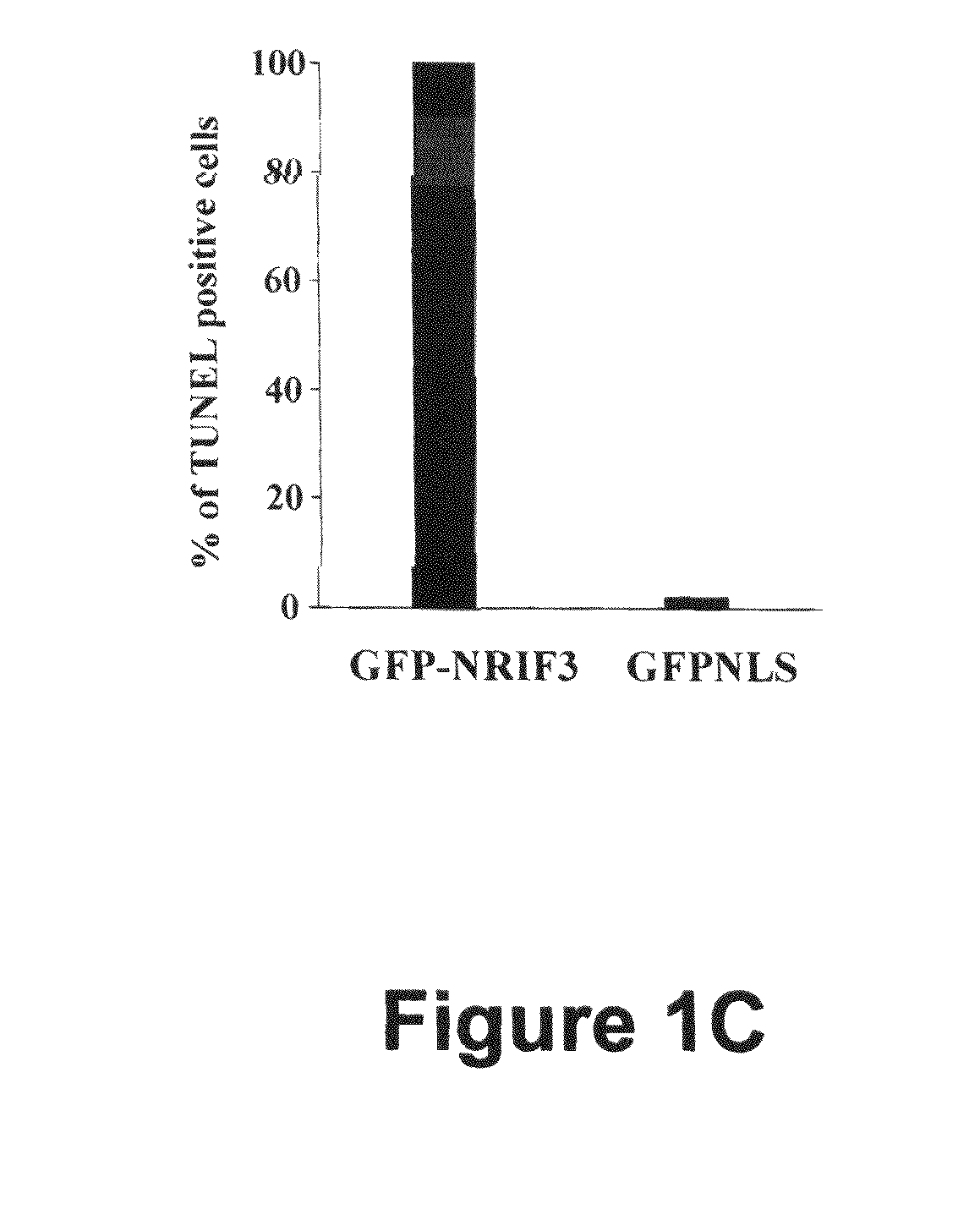Methods for treating breast cancer using nrif3 related molecules
a technology of related molecules and breast cancer, applied in the field of breast cancer treatment, can solve the problems of breast cancer drug treatment being somewhat limited, anti-estrogens, however, not being effective in er tumors, and remain a very challenging objectiv
- Summary
- Abstract
- Description
- Claims
- Application Information
AI Technical Summary
Benefits of technology
Problems solved by technology
Method used
Image
Examples
example 1
[0066]NRIF3 induces rapid and profound cell death in T-47D cells. We previously identified NRIF3 as a co-activator for certain members of the nuclear hormone receptor superfamily, including TR and RXR (28, 29). A unique feature of RXR is that it serves as the common heterodimeric partner for many other members of the nuclear receptor superfamily (33). Thus, a heterodimer composed of the retinoic acid receptor (RAR) and RXR is the functional unit that transduces retinoid signaling in vivo (21, 22). Retinoid signaling plays important roles in both development and homeostasis (21, 22). In addition, retinoids are known to inhibit the proliferation of certain breast cancer cells (2, 15), although the underlying molecular mechanism(s) have not been fully defined.
[0067]Our identification of NRIF3 as a co-activator for RXR prompted us to test whether NRIF3 would enhance the anti-proliferative effect of retinoids in responsive breast cancer cells. We and others have previously shown that ret...
example 2
[0070]Other members of the NRIF3 family induce apoptosis in T-47D cells. The human NRIF3 gene encodes several different proteins as a result of alternative splicing, including NRIF3, EnS (endonexin short form), and EnL (endonexin long form) (28, 29, 44). Both EnS and EnL share extensive identity with NRIF3 at the amino acid level (28, 29) (FIG. 2A). EnS is identical to the first 111 amino acids of NRIF3, and thus can be viewed as a naturally occurring truncation of NRIF3. Like NRIF3, EnS and EnL are primarily nuclear-localized, and together with NRIF3 constitute a new family of transcriptional coregulators (29). Given the similarity among the NRIF3 family members, we asked whether EnS and EnL also induce apoptosis in T-47D cells. To this end, T-47D cells were transfected with vectors expressing GFP-EnS or GFP-EnL, and 20 h later, were analyzed for expression of the GFP-fusion proteins and for apoptosis. We found that expression of GFP-EnS or GFP-EnL resulted in profound apoptosis (n...
example 3
[0071]NRIF3 contains a novel death domain (DD1). The region comprising the first 111 amino acids of NRIF3 (equivalent to EnS), which is sufficient to induce apoptosis, contains a number of structural and functional features identified in previous studies (29, 36). These include a coiled-coil domain (residues 84-112) that mediates protein-protein interactions, a putative nuclear localization signal (residues 63-66), a transrepression domain (residues 20-50, RepD1), an LxxLL motif (residues 9-13) that plays a role in interaction with certain nuclear receptors, and an RxL motif (residues 6-8) that binds cyclin A and mediates interaction with cyclin A / Cdk2 (see FIG. 2A). To test whether any of these known domains / motifs are required for NRIF3-mediated apoptosis and to further map the functional death domain in NRIF3, we generated a series of GFP-vectors expressing various regions of the N-terminal 111 amino acids of NRIF3. These GFP-fusion constructs were then individually expressed in ...
PUM
| Property | Measurement | Unit |
|---|---|---|
| cell permeation | aaaaa | aaaaa |
| hydrophobic | aaaaa | aaaaa |
| refractory | aaaaa | aaaaa |
Abstract
Description
Claims
Application Information
 Login to View More
Login to View More - R&D
- Intellectual Property
- Life Sciences
- Materials
- Tech Scout
- Unparalleled Data Quality
- Higher Quality Content
- 60% Fewer Hallucinations
Browse by: Latest US Patents, China's latest patents, Technical Efficacy Thesaurus, Application Domain, Technology Topic, Popular Technical Reports.
© 2025 PatSnap. All rights reserved.Legal|Privacy policy|Modern Slavery Act Transparency Statement|Sitemap|About US| Contact US: help@patsnap.com



